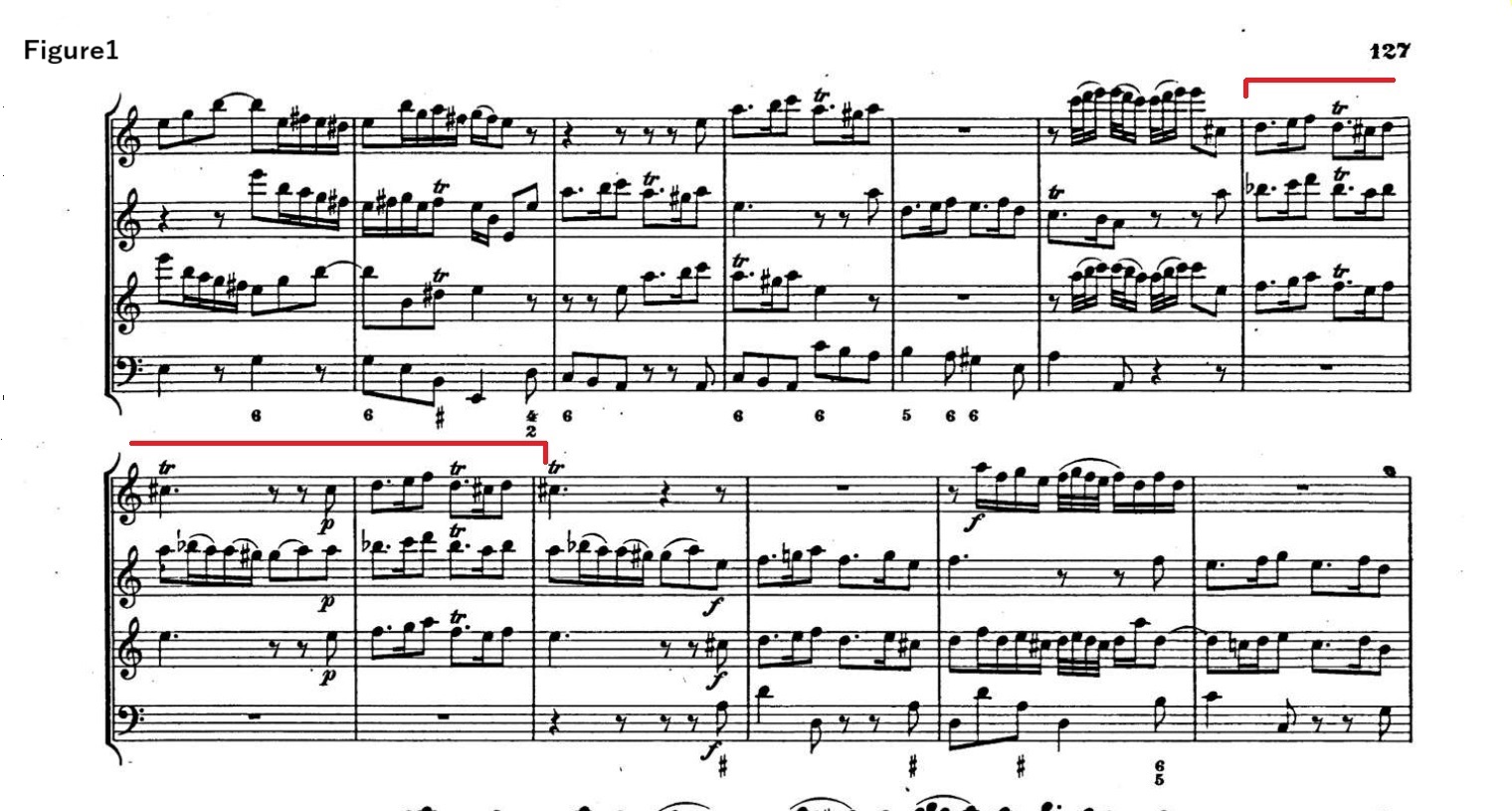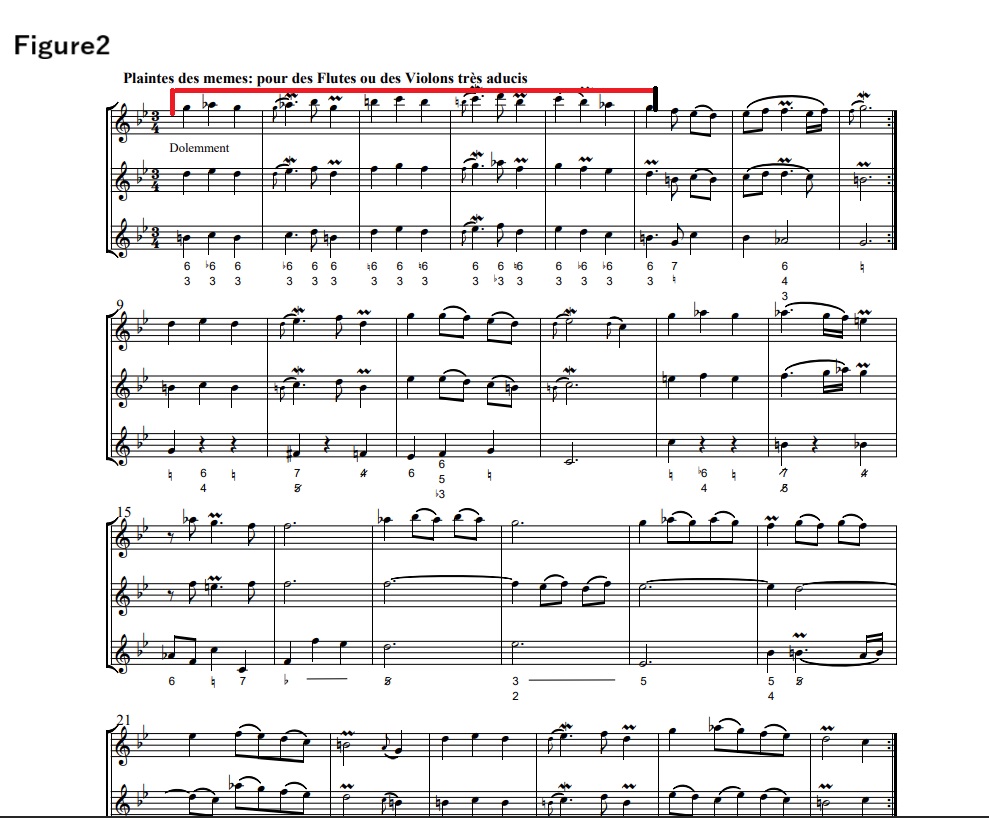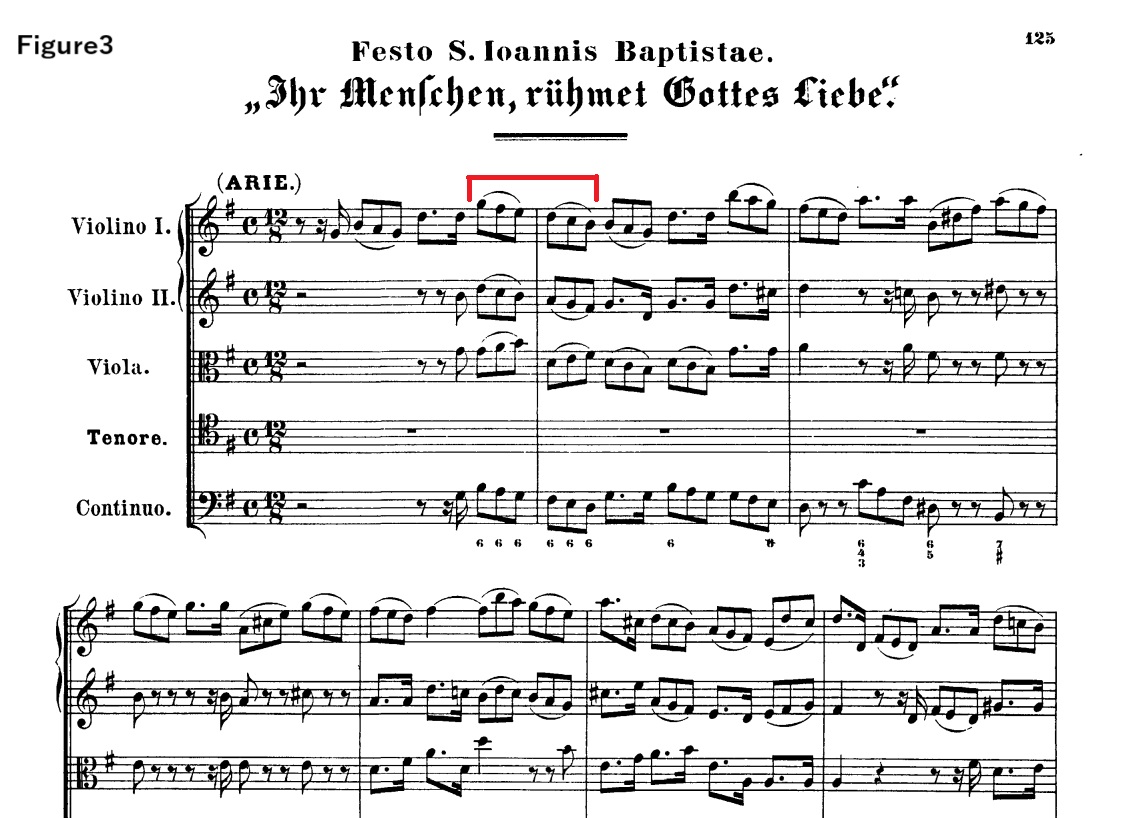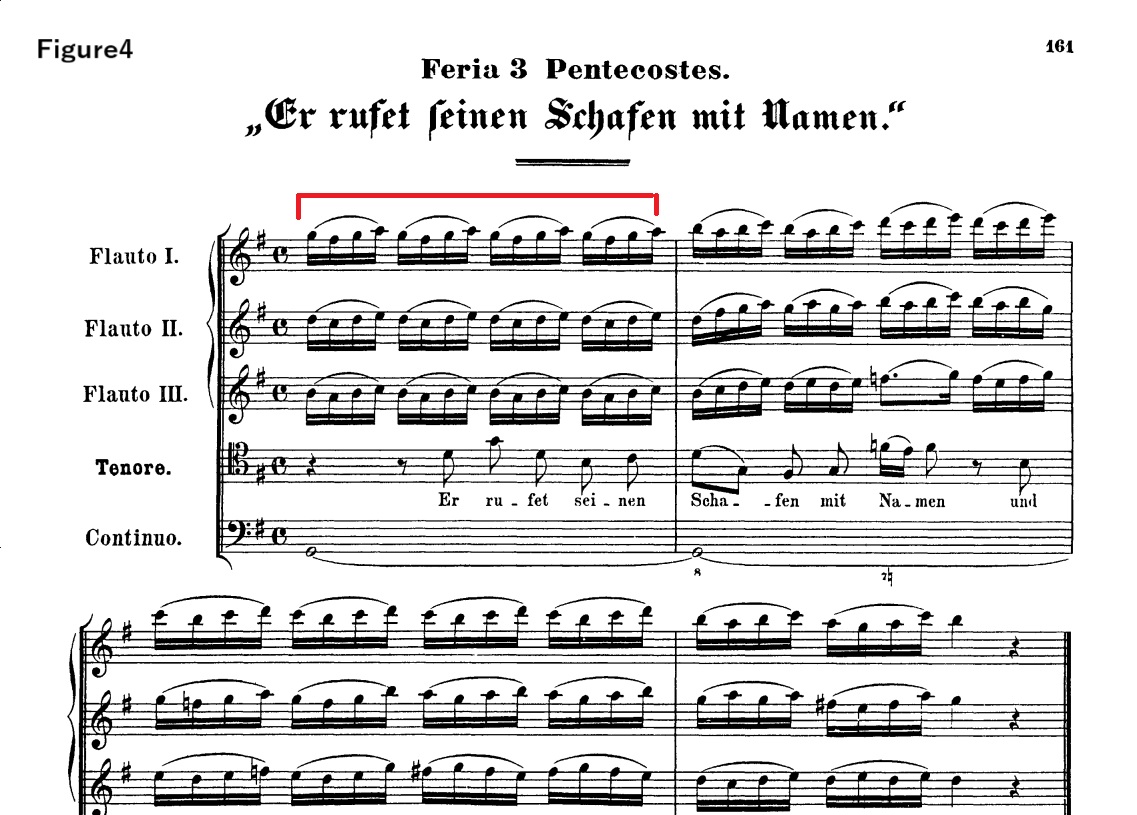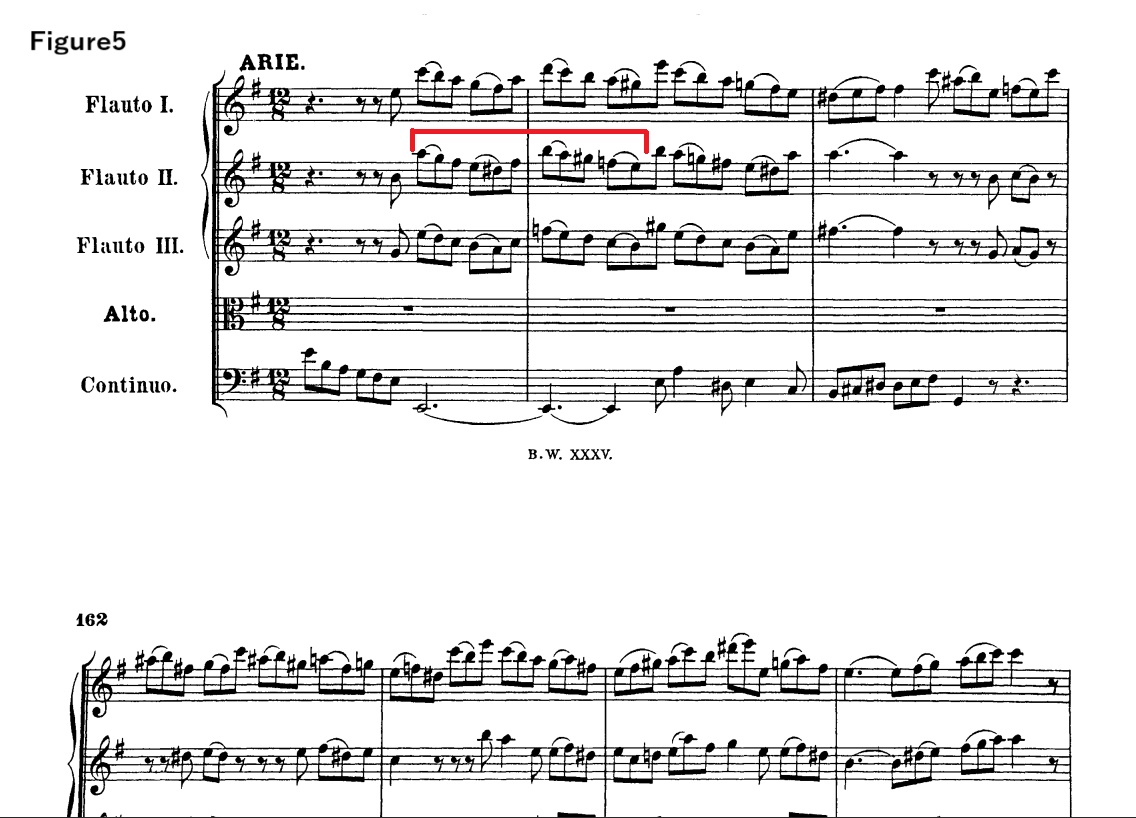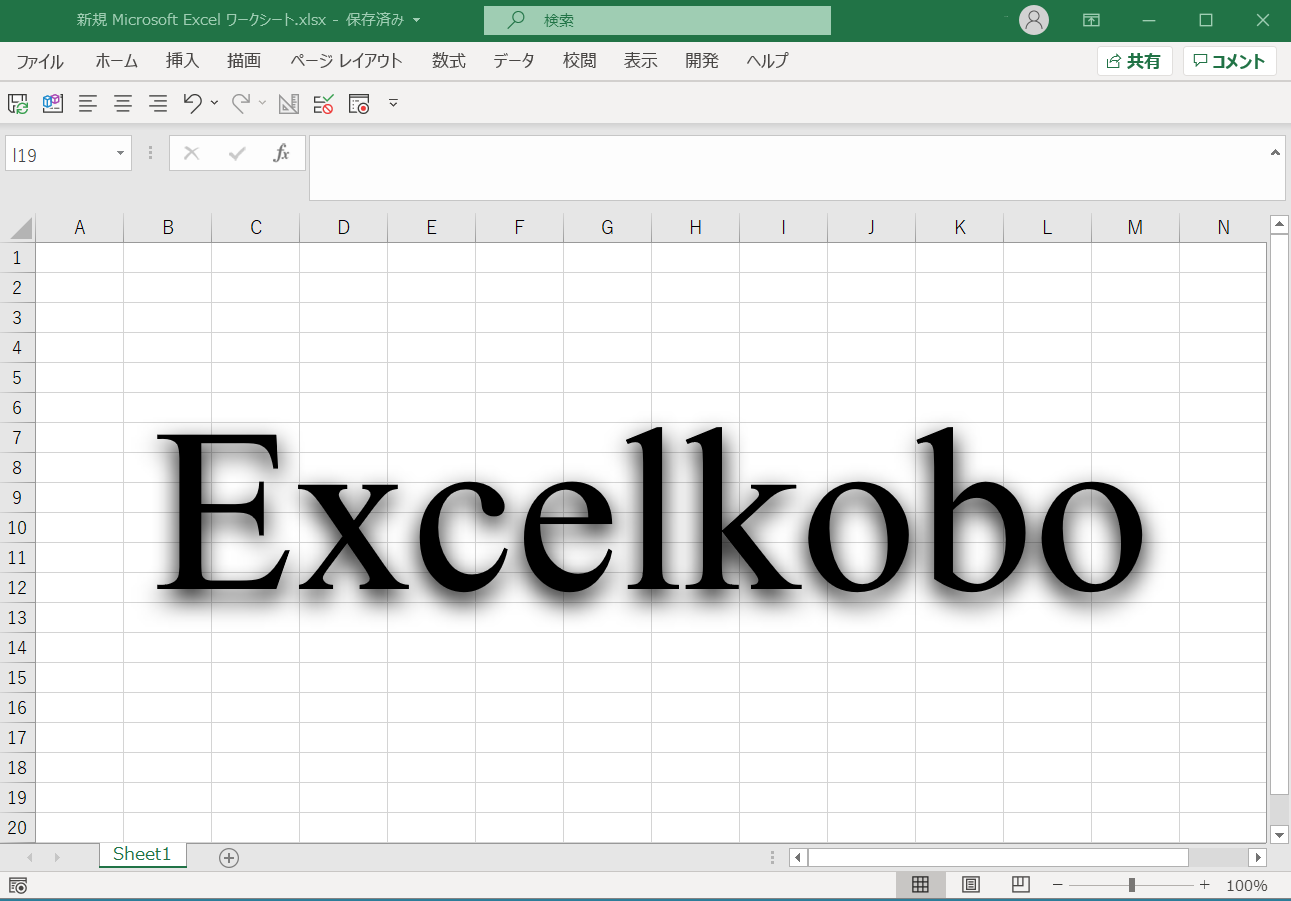About Parallel Fourths
Needless to say, parallel fifths are considered “forbidden” in music. But what about parallel fourths? They are not. Therefore, there are many pieces in the Baroque period that use them. Here are some examples:
1. Telemann: Quartet in D minor, 3rd Movement (Tafelmusik, Book 2, Figure 1)
2. Couperin: “Plaintes des Mêmes” from Praise of Lully (Figure 2)
3. Bach: Cantata No. 167 “Ihr Menschen, rühmet Gottes Liebe” (Figure 3)
4. Bach: Cantata No. 175 “Er rufet seinen Schafen mit Namen” (Figures 4, 5)
The emotions expressed by parallel fourths range from “emptiness,” “tenderness,” and “sacredness.” However, one important thing to note is that if you inadvertently shift the octave, this interval can turn into a forbidden “parallel fifth.” It is best to play it exactly as the composer wrote it. When arranging for a recorder quartet, etc., you should be very careful when raising and lowering the voices. #baroque #parallelfourth #片山俊幸
